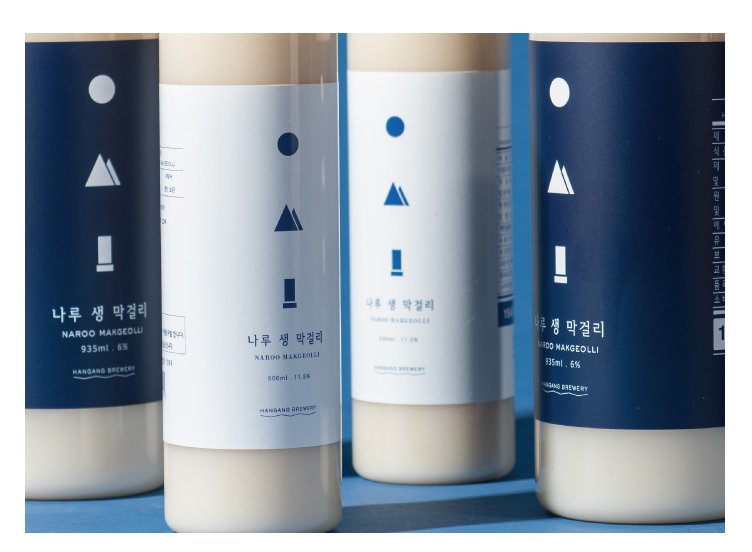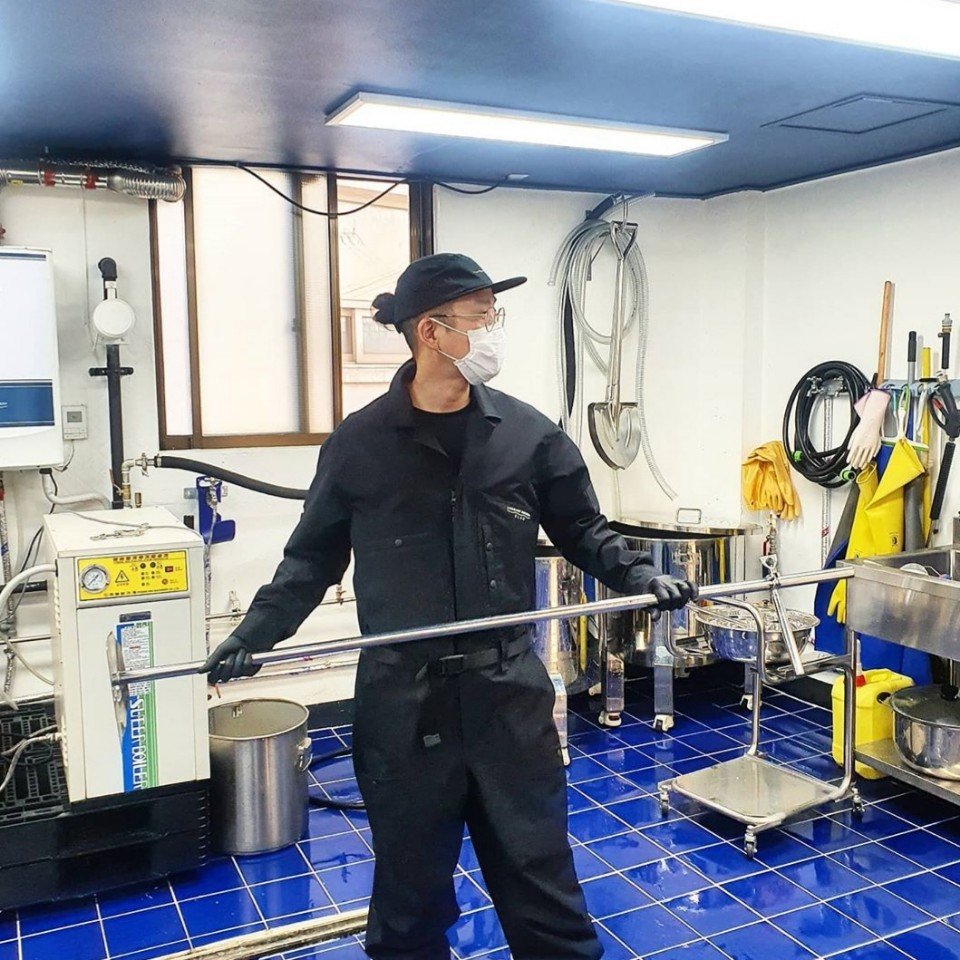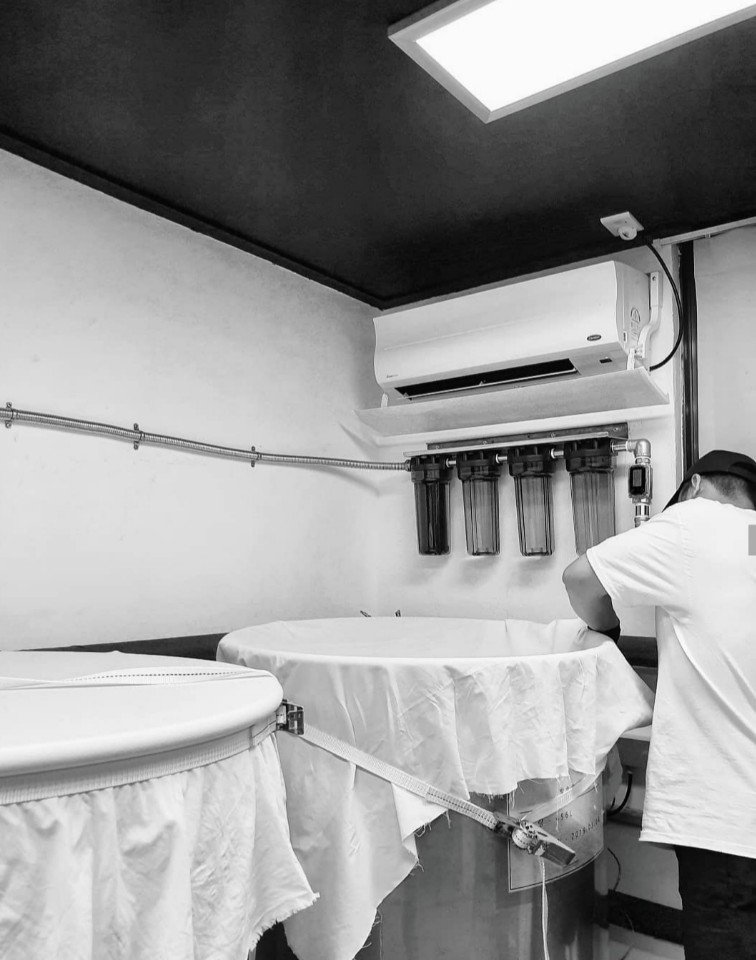 |
Hangang Brewery's makgeolli (Hangang Brewery) |
After a judicious shake, twist of the cap and pour, Hangang Brewery’s 6 percent ABV Naroo Makgeolli gently releases a tart, fermented scent akin to yogurt, followed by a delicate sweetness, nuances of Asian pear and green apple, a silky mouthfeel and a clean finish.
There is little carbonation in Hangang Brewery’s take on the traditional unrefined Korean rice wine, resulting in a smooth and creamy sip.
“Hangang Brewery wanted to achieve a balanced marriage of sweetness and acidity and a flavor that was concise,” CEO Koh Sung-yong, 38, said in an email interview. “We went for a soft texture that would lead to a smooth sensation rather than the refreshing sensation one gets from carbonation.”
“We did not use artificial or natural sweeteners and focused on bringing out the natural sweetness of the rice itself,” Koh said, explaining his brewery’s organic approach to this age-old libation.
 |
Hangang Brewery’s Naroo Makgeolli is brewed using a triple-fermentation process. (Hangang Brewery) |
Koh’s brewery is a relative newcomer to the makgeolli market.
Located in Seoul’s Seongsu-dong, Hangang Brewery first released Naroo Makgeolli in June 2019.
Less than year after their launch, the brewery has already attracted plenty of media attention, primarily for its local attitude -- made in Seoul with rice cultivated in Seoul -- and its unbending determination to produce additive-free, artisanal makgeolli.
Koh and the director of Hangang Brewery Lee Sang-wook were friends before they teamed up to brew makgeolli.
Koh was a brand marketer and ran a cafe for five years while his friend worked in architecture, interior design and construction before joining hands with Koh to craft makgeolli.
Both were interested in beer, soju, wine, whisky and traditional Korean alcoholic beverages, Koh elaborated, and wanted to try their hand at crafting, branding and marketing makgeolli their way.
The two studied how to brew and evaluate traditional Korean alcoholic beverages at an institute for approximately eight months before establishing their brewery.
The studying paid off.
Determined to craft a makgeolli that maintained its sweet profile without resorting to aspartame, an artificial sweetener used by some manufacturers to make up for lost sweetness when diluting the initial brew down to the desired alcohol level, Koh and his friend dug deep for an answer.
The conclusion was to go for a triple fermentation, which, according to Koh, is not the norm when it comes to makgeolli.
“I believe it is the norm to use a double fermentation process,” said Koh.
 |
Makgeolli needs to be stirred several times a day to supply the fermenting brew with oxygen to encourage the yeast to multiply and create alcohol. (Hangang Brewery) |
Triple fermentation, which is called “samyangju” in Korean, essentially means taking the first brew, adding more rice, fermenting, then adding more rice and fermenting the wine again.
Koh explained that by using a triple fermentation, he and his team were able to produce an initial approximate 14.6 percent ABV wine that was intense enough in flavor and sweetness so that when diluted down to 6 percent ABV with water, the flavor was not greatly diminished, eliminating any need for added sweeteners.
“By fermenting the wine one more time, not only is more alcohol produced, I believe it strengthens the sweetness of the wine,” said Koh.
After the brewing process is completed, Koh says the wine is aged for seven to 10 days in a temperature-controlled, refrigerated space to achieve the desired balance.
Then the wine is diluted to create Hangang Brewery’s two makgeolli -- the 6 percent ABV version and the 11.5 percent ABV version, which was released two months after the 6 percent version.
While Koh is all about a slow and organic approach to makgeolli, crafting it from a handful of ingredients -- rice, several varieties of yeast and water -- fermenting it three times before aging it further, he is fast when it comes to marketing.
Not only does Hangang Brewery have its own Instagram account and YouTube channel to boot, this March, Hangang Brewery launched an online store for those who want to enjoy their makgeolli at home.
Hangang Brewery; hangangbrewery.com
Naroo Makgeolli 6% ABV costs 7,000 won, Naroo Makgeolli 11.5% ABV costs 11,000 won
By Oh Jean (
oh_jean@heraldcorp.com)









![[Today’s K-pop] Blackpink’s Jennie, Lisa invited to Coachella as solo acts](http://res.heraldm.com/phpwas/restmb_idxmake.php?idx=644&simg=/content/image/2024/11/21/20241121050099_0.jpg)
